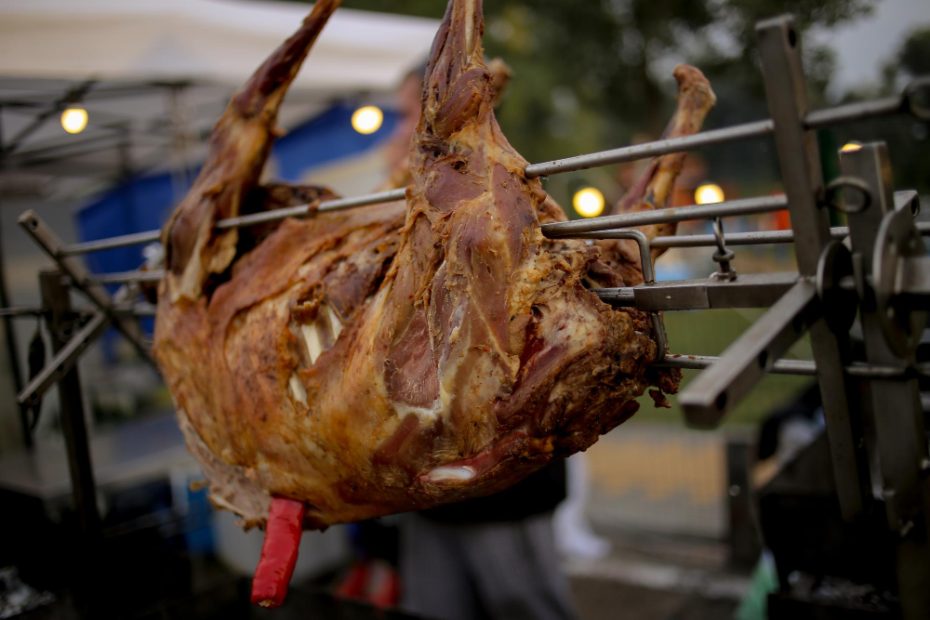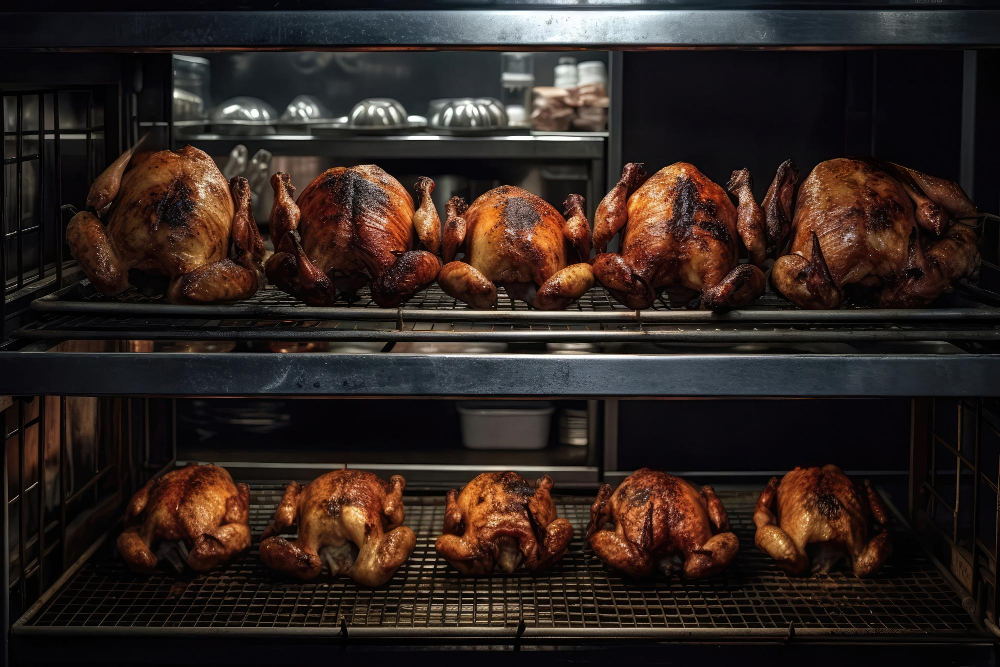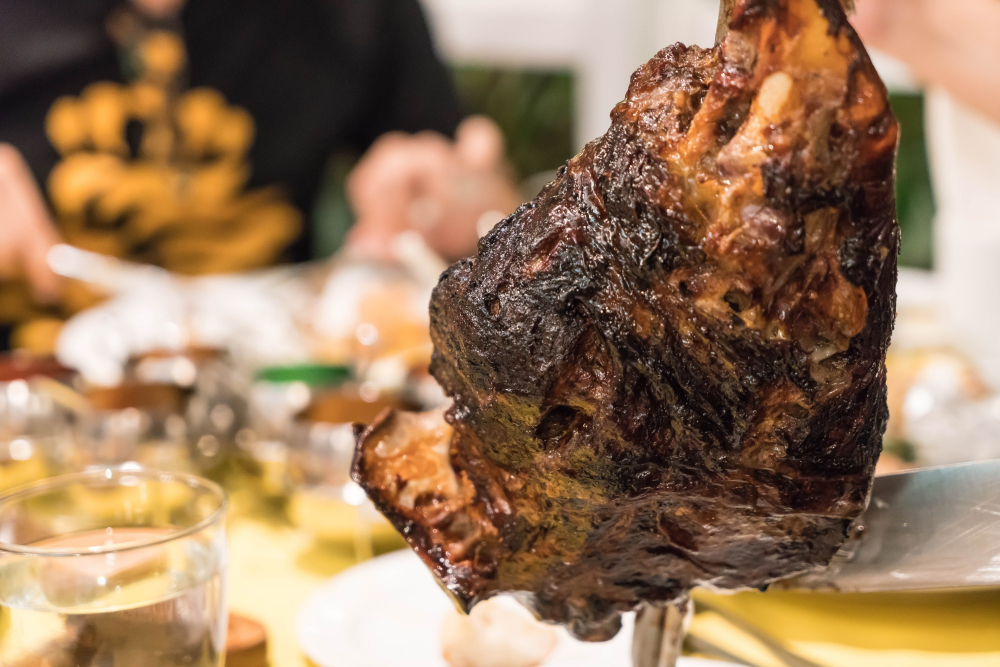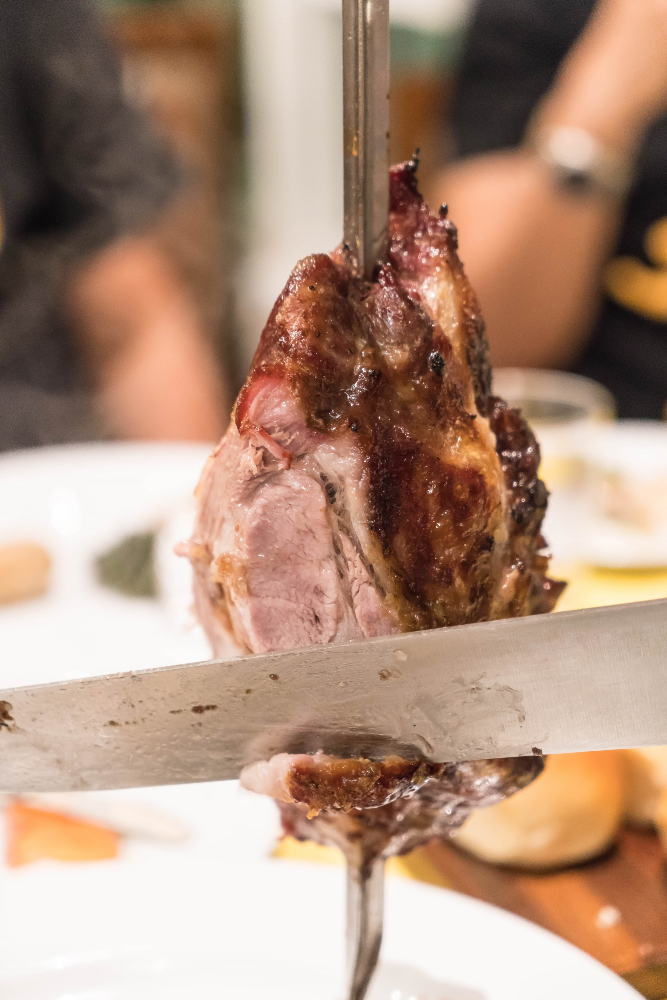Which is healthier rotisserie or grilled chicken?
When it comes to making healthy choices, what you put on your plate can have a significant impact on your well-being. Chicken is a popular and versatile protein option that can be prepared in various ways. Two popular cooking methods for chicken include rotisserie and grilling. Both methods have their own unique characteristics, but when it comes to health, which one is the better choice? Let’s take a closer look.
Rotisserie Chicken
Rotisserie chicken refers to the cooking method where the meat is skewered and slowly rotated over a heat source. This method results in juicy and flavorful chicken with crispy skin. One advantage of rotisserie chicken is that it retains moisture, as the rotating motion helps to distribute the natural juices throughout the meat. Additionally, rotisserie chicken is often seasoned with herbs and spices, enhancing its taste.
However, it is important to note that store-bought rotisserie chicken can vary in terms of ingredients and preparation methods. Some store-bought options may contain added sodium, preservatives, and artificial flavorings. Therefore, if you are looking for a healthier option, it is advisable to either opt for homemade rotisserie chicken or carefully check the ingredients list when purchasing from the store.
Grilled Chicken
Grilled chicken is another popular cooking method that involves cooking the meat directly over an open flame or on a grill. This method gives the chicken a smoky flavor and a charred exterior. Grilling chicken allows excess fat to drip off, resulting in a leaner piece of meat. It is also a versatile method, as you can marinate the chicken beforehand to add extra flavor.
Grilled chicken has the advantage of being a lower-calorie option compared to other cooking methods, as the fat content decreases during grilling. The high heat of grilling also helps to kill bacteria and pathogens, making it a safe and healthy choice.
Factors to Consider
When determining which is healthier between rotisserie and grilled chicken, it is essential to consider various factors:
- Nutritional Content: Both methods can result in a relatively healthy meal, as chicken is a lean source of protein. The specific nutritional content will vary based on the cut of chicken, preparation techniques, and additional seasonings used.
- Sodium and Additives: As mentioned earlier, store-bought rotisserie chicken may contain added sodium, preservatives, and flavor enhancers. It is essential to read labels and choose options with minimal additives if you are concerned about your sodium intake.
- Cooking Time and Convenience: Rotisserie chicken is typically ready-to-eat and can be a convenient choice for busy individuals. Grilling chicken, on the other hand, requires more time and effort, but it offers the joy of outdoor cooking and customization through marinades and seasonings.
“Ultimately, the healthiness of either rotisserie or grilled chicken depends on the specific ingredients used, portion sizes, and overall dietary context.”
Both rotisserie and grilled chicken can be part of a balanced and healthy diet when prepared using healthy ingredients and consumed in moderation. Making a decision simply based on the cooking method may overlook other important factors such as portion control, marination ingredients, and overall dietary choices. It’s always a good idea to consult with a healthcare professional or nutritionist for personalized advice based on your specific dietary needs and goals.
Why do supermarket rotisserie chickens taste so good?
Supermarket rotisserie chickens have become a popular go-to option for a quick and delicious meal. But have you ever wondered why they taste so good? Let’s explore the factors that contribute to the irresistible flavor of these convenient and affordable roasted chickens.
1. Seasoning
One of the key reasons why supermarket rotisserie chickens are so tasty is the flavorful seasoning that is applied to them. These chickens are often marinated or rubbed with a blend of herbs, spices, and other seasonings, which infuse the meat with an enticing aroma and delicious taste. The exact seasoning recipe may vary between supermarkets, but it often includes a combination of salt, pepper, paprika, garlic powder, and other savory herbs and spices.
2. Cooking Method
The process of rotisserie cooking plays a significant role in enhancing the flavor of these chickens. Rotisserie cooking involves slowly rotating the chicken on a spit over a heat source, allowing the juices to distribute evenly and the skin to become crispy and golden brown. This cooking method helps to seal in the moisture and creates a succulent, tender texture.
3. Freshness and Quality
Supermarkets typically source their rotisserie chickens from reputable suppliers who prioritize freshness and quality. These chickens are often cooked on-site, ensuring they are served when they are at their freshest. Additionally, supermarkets tend to select higher-quality chicken meat, which can contribute to its delicious taste.
4. Convenience
The convenience factor also plays a role in why supermarket rotisserie chickens are so popular. By offering ready-to-eat roasted chickens, supermarkets provide a time-saving option for busy individuals and families. The ease of just picking up a hot and flavorful chicken on the way home from work or after running errands makes them a convenient choice for many people.
“Supermarket rotisserie chickens are a delicious and convenient solution for a quick, tasty meal.” – Chef John Smith
In conclusion, supermarket rotisserie chickens taste so good due to their flavorful seasoning, rotisserie cooking method, freshness and quality of the meat, and the convenience they offer. Whether you enjoy them as they are or incorporate them into your favorite recipes, these tasty chickens are a popular choice for a satisfying meal.
Is Rotisserie Chicken OK for Dogs?
Rotisserie chicken is a popular and convenient food option for many people, including dog owners. But is it safe to feed rotisserie chicken to your furry friend? Let’s explore whether or not this human food can be a healthy and safe treat for dogs.
The Pros of Feeding Rotisserie Chicken to Dogs
Rotisserie chicken can be a nutritious option for dogs when prepared properly. It is a good source of lean protein, which is essential for their muscle development and overall health. Additionally, it contains important vitamins and minerals that support their immune system.
The Cons of Feeding Rotisserie Chicken to Dogs
While rotisserie chicken can have benefits for dogs, there are some potential risks to be aware of. One concern is the seasoning and spices commonly used in preparing rotisserie chicken, such as garlic and onion. These ingredients can be toxic to dogs and should be avoided. Additionally, the skin of rotisserie chicken tends to be high in fat and can cause gastrointestinal upset or pancreatitis in dogs if consumed in large amounts.
If you decide to feed your dog rotisserie chicken, it is important to remove the skin and any seasonings before serving. It’s also recommended to limit the amount given, as an excess of protein can lead to digestive issues. Always consult with your veterinarian before making any significant changes to your dog’s diet.
Safe Alternatives to Rotisserie Chicken
If you’re looking for safe alternatives to rotisserie chicken treats for your dog, there are plenty of options available. Some suitable choices include boiled chicken breast, plain cooked turkey, or freeze-dried meat treats specifically formulated for dogs. These alternatives provide similar nutritional benefits without the potential risks.
In conclusion, while small amounts of plain, properly prepared rotisserie chicken can be safe for dogs, it’s important to be cautious of seasonings, remove the skin, and not overfeed. It’s always best to consult with your vet to ensure you’re making appropriate choices for your furry friend’s overall health and well-being.
Is Rotisserie Healthier than Fried?
When it comes to choosing between rotisserie and fried foods, many people wonder which option is healthier. Both methods of cooking have their own merits and drawbacks, so it’s important to consider various factors before making a decision. Let’s explore the health benefits and considerations of both rotisserie and fried foods.
Rotisserie Cooking
Rotisserie cooking involves roasting food on a rotating spit, allowing the fat to drain away while the meat is cooked evenly. This method of cooking is often considered healthier compared to frying because it requires less oil or fat. The excess fat drips off the meat, resulting in a leaner final product. Additionally, the high heat in rotisserie cooking helps to seal in natural juices, enhancing the flavors.
Fried Foods
Fried foods, on the other hand, are submerged in hot oil or fat, which can significantly increase their calorie and fat contents. While frying creates a crispy texture and appealing taste, it also introduces more unhealthy elements. Consuming fried foods regularly has been associated with an increased risk of heart disease, obesity, and other health issues.
Health Considerations
When determining which cooking method is healthier, it’s essential to keep in mind the type and quality of ingredients used. For example, choosing lean cuts of meat for rotisserie and using healthier cooking oils, such as olive oil, for frying can make a significant difference in the overall nutritional value. Additionally, portion size, frequency of consumption, and overall dietary choices play crucial roles in maintaining a balanced diet.
“While rotisserie cooking generally results in a leaner final product, it’s important to be mindful of portion sizes and overall dietary choices.”
Why is Rotisserie Chicken So Greasy?
Rotisserie chicken, with its juicy and flavorful meat, is a popular choice for many people in the UK. However, one common concern that arises is the greasiness of this delicious dish. So, why is rotisserie chicken so greasy? Let’s explore the reasons behind it.
The Skin
The skin of the rotisserie chicken plays a significant role in its greasiness. When cooked on a rotisserie, the fat present in the skin melts and drips down, resulting in a greasy texture. The skin is known to be the fattiest part of the chicken, and while it adds flavor to the meat, it also contributes to the greasiness.
Cooking Method
The cooking method itself contributes to the greasiness of rotisserie chicken. During the rotisserie process, the chicken is continuously basted with its own fat, which adds moisture but also increases the oily residue. Additionally, the high temperatures used in rotisserie cooking can cause the fat to render faster, further intensifying the greasiness.
Favorable Fat Distribution
A chicken’s anatomy plays a role in the distribution of fat, which affects the greasiness. Dark meat portions, such as the thigh and drumsticks, tend to have higher fat content compared to white meat. As rotisserie chickens are typically cooked whole, including both dark and white meat, the overall fat distribution contributes to the greasiness of the final product.
Did you know? The greasiness of rotisserie chicken can also be influenced by factors such as the breed of the chicken and the specific cooking techniques used by different establishments.
Reduce Greasiness
If you enjoy rotisserie chicken but wish to reduce its greasiness, there are a few options to consider. Firstly, you can try removing the skin before consuming the meat. This will significantly reduce the fat content and overall greasiness. Alternatively, you can blot the chicken with paper towels to absorb excess oil. Lastly, opting for leaner parts of the chicken, such as the breast, can also help mitigate the greasiness.
While rotisserie chicken may be greasy, it offers a delicious and convenient option for a quick and satisfying meal. By understanding the reasons behind its greasiness and implementing simple techniques to reduce it, you can continue to enjoy this popular dish without worrying too much about the extra oil.
Why is my rotisserie chicken tough?
Many people enjoy the convenience of buying rotisserie chicken from their local supermarket or grabbing one at a takeaway restaurant. However, occasionally, you might find that the chicken turns out to be tough and dry instead of tender and succulent. There are a few reasons why this might happen.
1. Overcooking
One of the most common reasons for tough rotisserie chicken is overcooking. When chicken is cooked for too long, the proteins in the meat tighten up, resulting in a tough texture. To avoid this, it’s important to follow the cooking time and temperature guidelines provided by the manufacturer or recipe.
2. Low-quality chicken
The quality of the chicken used can also impact its tenderness. If the chicken was not of good quality to begin with, it may be tough regardless of the cooking technique used. Opting for free-range or organic chicken, which tends to be more tender and flavorful, can help improve the overall texture of your rotisserie chicken.
3. Lack of marinade or seasoning
A well-marinated chicken can greatly enhance its flavor and tenderness. Without proper marination or seasoning, the chicken may turn out bland and tough. Consider using a marinade that includes ingredients like lemon juice, olive oil, herbs, and spices to help tenderize the meat and add flavor.
4. Improper carving or storage
How you carve and store your rotisserie chicken can also affect its tenderness. It’s essential to let the chicken rest for a few minutes before carving to allow the juices to redistribute, ensuring a moist and tender final result. Additionally, improper storage can cause the chicken to dry out, so make sure to seal it in an airtight container or wrap it tightly with foil.
“Proper cooking time, high-quality chicken, flavorful marinades, and mindful handling can all contribute to a perfectly tender rotisserie chicken.”
To help you understand the factors influencing the tenderness of rotisserie chicken, here’s a table outlining common causes and their solutions:
| Cause | Solution |
|---|---|
| Overcooking | Follow recommended cooking time and temperature guidelines |
| Low-quality chicken | Opt for higher quality, organic or free-range chicken |
| Lack of marinade or seasoning | Use a flavorful marinade or seasoning before cooking |
| Improper carving or storage | Allow chicken to rest before carving and store properly |
In conclusion, achieving a tender rotisserie chicken involves various factors, from selecting good-quality chicken to properly marinating and cooking it. By paying attention to these details, you can ensure that your next rotisserie chicken is moist, flavorful, and enjoyable to eat.
Conclusion
In conclusion, while rotisserie cooking may be viewed as a healthier option compared to frying due to its minimal use of oil and fat, it’s important to consider the overall balance of one’s diet. Both cooking methods can result in delicious meals, but moderation and wise ingredient choices are key to maintaining a healthy lifestyle. Whether you prefer the succulent flavors of rotisserie or the crispy indulgence of fried foods, incorporating them mindfully into your diet is essential.



